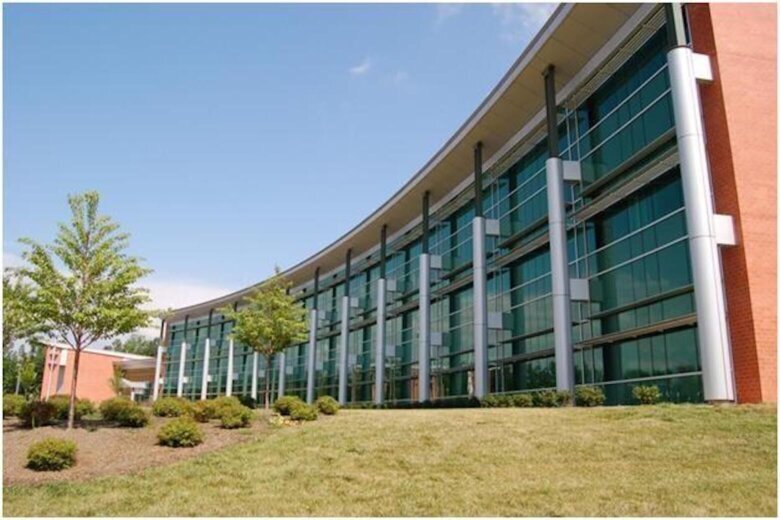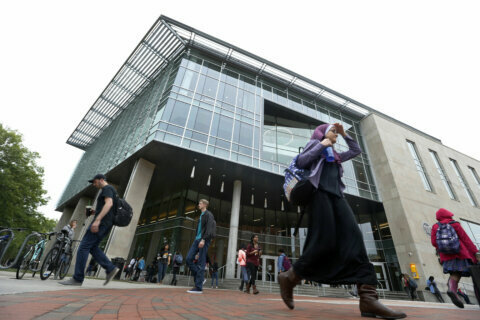
Prince William County Public Schools will be hiring another human trafficking prevention specialist, which will be funded by the recently approved fiscal 2025 budget.
The county’s board of supervisors approved the school system’s budget in late April.
Virginia’s second-largest school system already has one human trafficking prevention specialist, a role that’s been around for over a decade. Anthony Clark, the school division’s supervisor of school social workers, said the concept came to be in 2012, when the Virginia General Assembly updated the state code to say that school districts will provide resources and prevention around human trafficking.
Prince William County received a grant from the Potomac Health Foundation and hired the school system’s first trafficking specialist in 2013. The role was funded using grant money until 2018, when the school board made it permanent.
The county, Clark said in an exclusive interview with WTOP, was the first in the state to create such a role. A Loudoun County schools spokesman added that the school system has a number of staff members trained in trauma-informed practices but not a position specific to that role.
The job is helping keep students safe, Clark said, by recognizing that schools are in a unique position to assist students who may be involved in trafficking.
“We see every student in Prince William County, therefore they pass through our educational system,” Clark said. “We find ourselves better equipped to work with our community as a partner to help identify what the needs of these students and this vulnerable population looks like.”
Clark described the position as a dedicated person at the school level “to identify these students who may be involved in human trafficking, whether it’s labor or sex trafficking, and also do some prevention around them with respect to direct services and intervention for those students.”
What the lessons entail
Tiffany DiBenedetto started in the human trafficking prevention specialist role this school year. The job, she told WTOP in an exclusive interview, is different every day.
DiBenedetto regularly monitors data and often consults with school social workers. If they’ve identified a concern about a student, they consult with her about specific cases. She also coordinates the school district’s Human Trafficking Prevention Program, working closely with physical health and physical education teachers to implement that presentation into the ninth grade curriculum.
Since the program started, almost 50,000 students have participated in the trafficking lesson. It’s part of the school district’s Family Life Education curriculum for high school freshmen.
Part of that lesson, Clark said, is showing students what trafficking looks like. They explain that it’s not similar to what happens in the 2008 movie “Taken,” where someone is kidnapped, taken to another country and sold. Teachers explain it could start by someone wanting to start a relationship with them, buying them expensive gifts and admiring their physical appearance.
The lessons reveal warning signs, such as getting involved with an older romantic partner or getting a tattoo or some type of branding. The school district also looks at factors such as absenteeism.
“We can really see ourselves as sort of a central hub, as far as getting that information that some of our other community partners and agencies may not even be aware of,” Clark said. “Because we have so many staff in place, a lot of things are said, a lot of things just kind of take place within the school setting.”
Once the presentation ends, students get the chance to meet with school social workers. Sometimes, they’re seeking more information about prevention.
“We may meet with the student together to provide that additional education around human trafficking,” DiBenedetto said. “Other times, it may look like there are some concerns there. Together, the school social worker and I will identify the student’s needs and make the necessary referrals.”
Each year, Clark said, the school system discovers that one or two of its students are involved in trafficking.
“The instances are very rare in the county, but I do believe that it’s an important education to raise that awareness piece for students and staff, so they can identify what the warning signs are, be educated around that area, as well as know where to go for help,” DiBenedetto said.
If the school system learns a student may be involved in trafficking, the goal is then to connect them with services and support “to try to get them out of that environment of trafficking.” They also contact law enforcement and connect with other community groups.
Clark said the county is working to determine any gaps in services that could be addressed when a second specialist is hired.
“We do see an expansion of our existing practices and programming,” Clark said.
Common trafficking misconceptions
As part of the school district’s programming, Clark said officials are working to show students what trafficking doesn’t look like.
“This is not a situation where someone’s going to come kidnap you and just take you off to some far land, and have you involved in trafficking,” Clark said.
Traffickers usually target 12 or 13-year-old students. The majority of trafficking victims are female.
However, Clark said, “The misconception becomes that males are not targeted.”
If male students are targeted, Clark said they’re usually not targeted to be brought into sex trafficking but instead are recruited to be brought in as a trafficker themselves.
“We have victimization on both sides of that, typically with males,” Clark said.
The county also explains to students what the grooming process looks like and emphasizes that it’s something that happens over time, not quickly.
“We think, for a lot of our young people, that’s a big part of the misconceptions around what traffickers do in order to groom their victims,” he said.
Get breaking news and daily headlines delivered to your email inbox by signing up here.
© 2024 WTOP. All Rights Reserved. This website is not intended for users located within the European Economic Area.









